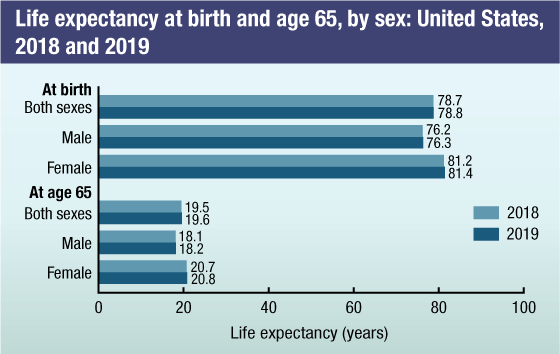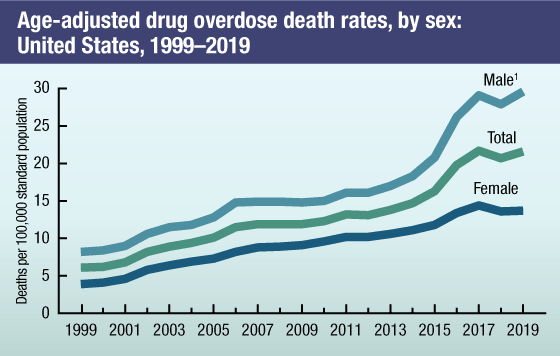National Vital Statistics System
NCHS Fact Sheet, March 2021
PDF Version pdf icon[PDF – 193 KB]
About NCHS
The National Center for Health Statistics (NCHS) is the nation’s principal health statistics agency, providing data to identify and address health issues. NCHS compiles statistical information to help guide public health and health policy decisions.
Collaborating with other public and private health partners, NCHS uses a variety of data collection mechanisms to obtain accurate information from multiple sources. This process provides a broad perspective on the population’s health, influences on health, and health outcomes.
National Vital Statistics System
The National Vital Statistics System (NVSS) provides the nation’s official vital statistics data, and is the oldest, most successful example of intergovernmental data sharing in public health. Through NVSS, the 57 vital registration jurisdictions (50 states, New York City, District of Columbia, and 5 U.S. territories) send NCHS information on the approximately 6.8 million birth, death, and fetal death events occurring each year. NCHS collects, analyzes, and disseminates these data to create the nation’s official vital statistics. NVSS provides the most complete and continuous data available to public health officials at the national, state, and local levels, and in the private sector. NVSS vital statistics are a critical component of the national health information system, providing data to monitor progress toward achieving important health goals.
Selected key health indicators produced by NVSS
- Teen births and birth rates
- Pregnancy and infant outcomes
- Risk factors for adverse pregnancy outcomes
- Life expectancy
- Leading causes of death
- Infant mortality rates
Examples of NVSS data
Teen births and birth rates
- The teen birth rate (birth rate for females aged 15–19) for 2019 was 16.7 births per 1,000, down 4% from 2018 and another record low for the nation. This rate has fallen 60% since 2007.
- The birth rate for unmarried women was 9 births per 1,000 unmarried women aged 15–44 in 2019, down less than 1% from 2018 (40.1). The 2019 nonmarital birth rate was 23% lower than the peak of 51.8 in 2007 and 2008.
Pregnancy and infant outcomes
- In 2019, the cesarean delivery rate decreased to 31.7% from 39% in 2018. The cesarean delivery rate for 2019 was 4% lower than the peak in 2009 (32.9%).
- The preterm birth rate rose from 10.02% in 2018 to 10.23% in 2019; rates rose for each race and Hispanic-origin group.
- The percentage of mothers beginning prenatal care in the first trimester of pregnancy increased from 2018 through 2019 among non-Hispanic white and non-Hispanic black women, but decreased among Hispanic women.
Risk factors for adverse pregnancy outcomes
Obesity, defined as a body mass index of 30.0 or more, has been increasing in the United States in recent decades. Maternal obesity, or obesity prior to becoming pregnant, has been associated with adverse outcomes for both mother and newborn. Recent data from NVSS show that:
- Twenty-nine percent of all women who gave birth in 2019 had obesity, an 11% rise over the 2016 level.
- Rates of maternal obesity rose for all maternal age and educational groups and in most U.S. states from 2016 through 2019.
Life expectancy
Life expectancy at birth represents the average number of years that a group of infants would live if the group was to experience, throughout life, the age-specific death rates present in the year of birth.
- In 2019, life expectancy at birth was 78.8 years for the total U.S. population—an increase of 0.1 year from 78.7 years in 2018. For males, life expectancy changed 0.1 year from 76.2 years in 2018 to 76.3 in 2019. Life expectancy for females increased 0.2 year from 81.2 years in 2018 to 81.4 in 2019. In 2019, the difference in life expectancy between females and males was 5.1 years, an increase of 0.1 year from 2018.
- In 2019, life expectancy at age 65 for the total population was 19.6 years, an increase of 0.1 year from 2018. Life expectancy at age 65 was 20.8 years for females and 18.2 years for males.
 image icon
image icon
NOTE: Access data table for Figure 1 at: https://www.cdc.gov/nchs/data/databriefs/db395-tables-508.pdf#1pdf icon
SOURCE: National Center for Health Statistics, NCHS, National Vital Statistics System, Mortality.
Leading causes of death
The 10 leading causes of death in 2019 remained the same as in 2018, although kidney disease, the eighth leading cause, and influenza and pneumonia, the ninth in 2019, switched ranks.
Drug overdose deaths
Deaths from drug overdose are an increasing public health burden in the United States. The most recent data from NVSS show:
- In 2019, 70,630 drug overdose deaths occurred in the United States, for an age-adjusted rate of 21.6 per 100,000 standard population.
- The age-adjusted rate of drug overdose deaths increased from 1999 through 2017, with different rates of change over time. The rate in 2019 (21.6) was significantly higher than the rate in 2018 (20.7), but similar to the rate in 2017 (21.7).
- For each year, rates were higher for males than females.
- From 2012 through 2019, the rate of drug overdose deaths involving psychostimulants, which include drugs such as methamphetamine, increased more than 6-fold, from 0.8 to 5.0.
- The rate of drug overdose deaths involving synthetic opioids other than methadone, which include drugs such as fentanyl, fentanyl analogs, and tramadol, increased from 1.0 in 2013 to 11.4 in 2019.
- The rate of drug overdose deaths involving natural and semisynthetic opioids, which include drugs such as oxycodone and hydrocodone, increased from 1.0 in 1999 to 4.4 in 2017. The rates in 2018 (3.8) and 2019 (3.6) were lower than the rate in 2017.
- The rate of drug overdose deaths involving cocaine increased from 1.4 in 1999 to 2.5 in 2006, then decreased to 1.4 in 2012. From 2012 through 2019, the rate more than tripled from 1.4 in 2012 to 4.9 in 2019.
- From 2012 through 2019, the rate of drug overdose deaths involving psychostimulants, which include drugs such as methamphetamine and amphetamine, increased more than 6-fold, from 0.8 to 5.0.
 image icon
image icon
1Rates for males were significantly higher than rates for females for all years, p < 0.05.
NOTES: Significant increasing trend from 1999 through 2017, with different rates of change over time for all groups, p < 0.05. Drug overdose deaths are identified using the International Classification of Diseases, 10th Revision (ICD–10) underlying cause-of-death codes X40–X44, X60–X64, X85, and Y10–Y14. Age-adjusted death rates were calculated using the direct method and the 2000 U.S. standard population. The number of drug overdose deaths in 2019 was 70,630. Access data table for Figure 1 at: https://www.cdc.gov/nchs/data/databriefs/db394-tables-508.pdf#1.pdf icon
SOURCE: National Center for Health Statistics, NCHS, National Vital Statistics System, Mortality.
Infant mortality
- The 2019 infant mortality rate of 558.3 infant deaths per 100,000 live births did not change significantly from the rate in 2018.
- Several changes occurred for the rankings of the leading causes of infant death between 2018 and 2019. Maternal complications, the third leading cause of death in 2018, became the fifth leading cause of death in 2019, while unintentional injuries, the fifth leading cause in 2018, became the third leading cause in 2019. Congenital malformations and low birth weight continued to be the two leading causes of infant death.
Challenges and future opportunities
NCHS continues to work with NVSS partners to modernize the technology infrastructure of the United States vital statistics system by moving all states from outdated paper-based systems to web-based systems integrated with electronic health records and public health information systems, and by re-engineering the NCHS automated coding system. These technologies will allow for rapid compilation and use of these critical data sources, and will enable the vital statistics system to more effectively contribute to (1) the public health surveillance of disease outbreaks at the community, state, and national levels; (2) health services research; and (3) public health policy decisions at all levels of government.
For more information about NCHS, visit https://www.cdc.gov/nchs.
For more information about NVSS, visit https://www.cdc.gov/nchs/nvss.htm.